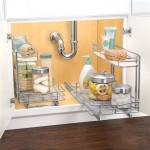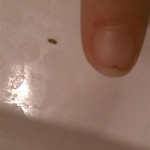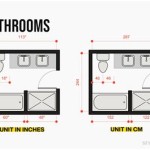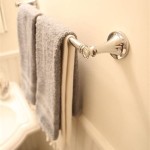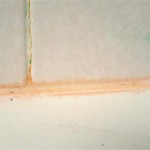Bathroom Sink Is Clogged And Filled With Water: A Comprehensive Guide to Remediation
A bathroom sink clogged and filled with water is a common household plumbing problem. This issue can stem from various causes, ranging from simple obstructions to more complex plumbing malfunctions. Understanding the potential reasons behind the clog and possessing the knowledge of effective troubleshooting techniques is crucial for resolving the problem efficiently and preventing future occurrences. This article provides a detailed exploration of the common causes, diagnostic steps, and effective remedies for a bathroom sink that is clogged and filled with water.
The presence of standing water in a bathroom sink signifies a blockage within the drainage system. This blockage prevents the free flow of water, leading to accumulation within the basin. Identifying the precise location and nature of the clog is the first step towards rectifying the situation. A systematic approach to diagnosis can save time and effort by targeting the specific area of the problem.
Identifying the Source of the Clog
The primary factors contributing to a clogged sink often relate to the materials entering the drain. Hair, soap scum, toothpaste, and small objects are common culprits. Over time, these materials accumulate within the pipes, gradually restricting the water flow until a complete blockage occurs. Analyzing the specific characteristics of the clog can guide the selection of the appropriate removal technique.
Hair is a frequent contributor to drain clogs. Its fibrous nature allows it to easily tangle and bind to other materials, forming a resilient mass that obstructs the pipe. Soap scum, a byproduct of the chemical reaction between soap and hard water, also adheres to pipe walls, narrowing the passage and trapping debris. Toothpaste, while seemingly innocuous, can solidify within the pipes, especially when combined with other substances. Accidental dropping of small objects, such as jewelry or bottle caps, can also create immediate and significant blockages.
Beyond the immediate causes, the design and age of the plumbing system can influence its susceptibility to clogs. Older pipes may have corroded surfaces or narrow diameters, making them more prone to accumulation of debris. Improperly installed plumbing can also lead to areas of poor drainage where materials are more likely to settle and form blockages.
External factors, such as tree root intrusion into underground pipes, can also indirectly contribute to sink clogs. While less common, tree roots can penetrate sewer lines, causing backups that manifest as slow drainage or clogs in various plumbing fixtures, including bathroom sinks.
Diagnostic Steps for a Clogged Sink
Before attempting any remediation techniques, it is essential to systematically diagnose the problem. This involves visually inspecting the sink and drain components, as well as testing the water flow to assess the severity of the blockage. A methodical approach can help pinpoint the location and nature of the clog, enabling a more targeted and effective solution.
Begin by visually inspecting the sink drain opening for any visible obstructions, such as hair or debris. Remove any accessible materials manually. Next, examine the pop-up stopper mechanism, if present. This mechanism can often trap hair and other debris, contributing to the clog. Disassemble the pop-up stopper and thoroughly clean it, removing any accumulated material.
After addressing visible obstructions, test the water flow. Slowly pour water into the sink and observe how quickly it drains. If the water drains slowly or not at all, the clog is likely located further down the drainpipe. In this case, proceed to inspect the P-trap, the curved section of pipe located under the sink. The P-trap is designed to trap debris and prevent sewer gases from entering the house, but it can also be a common site for clogs.
To inspect the P-trap, place a bucket under the trap to catch any spilled water. Carefully loosen the slip nuts that connect the P-trap to the drainpipes. Remove the P-trap and thoroughly clean it, removing any accumulated debris. Reassemble the P-trap and tighten the slip nuts, ensuring a watertight seal. Test the water flow again to assess whether the clog has been resolved.
If the clog persists after cleaning the P-trap, the blockage is likely located further down the drainpipe, possibly in the wall or floor. In this case, more advanced techniques, such as using a drain snake or chemical drain cleaner, may be necessary. However, caution should be exercised when using chemical drain cleaners, as they can be corrosive and potentially damage the plumbing system.
Effective Remediation Techniques
Once the location and nature of the clog have been identified, the appropriate remediation technique can be selected. Several methods are available, ranging from simple manual removal to more advanced plumbing tools and chemical solutions. The choice of method depends on the severity of the clog and the accessibility of the blockage.
Manual Removal: For visible obstructions near the drain opening or within the pop-up stopper mechanism, manual removal is often the simplest and most effective solution. Tweezers, pliers, or a bent wire hanger can be used to extract hair, debris, and small objects from the drain. This method is particularly useful for removing large clumps of hair that are easily accessible.
Plunger: A plunger can be an effective tool for dislodging clogs in bathroom sinks. Ensure that there is enough water in the sink to cover the cup of the plunger. Create a tight seal around the drain opening and vigorously plunge up and down for several minutes. The pressure created by the plunger can dislodge the clog and allow water to flow freely. It may be necessary to repeat this process several times to completely clear the blockage.
Baking Soda and Vinegar: This natural cleaning solution can be effective for dissolving mild to moderate clogs. Pour one cup of baking soda down the drain, followed by one cup of vinegar. Allow the mixture to fizz and bubble for about 30 minutes. Then, flush the drain with hot water. The chemical reaction between baking soda and vinegar can help break down grease, hair, and other organic materials that contribute to clogs.
Drain Snake: A drain snake, also known as an auger, is a flexible tool that can be inserted into the drainpipe to break up or retrieve clogs located further down the line. Insert the drain snake into the drain opening and carefully advance it through the pipe, rotating the handle to break up the clog. Once the clog has been dislodged, remove the drain snake and flush the drain with hot water to remove any remaining debris. Different types of drain snakes are available, ranging from small hand-cranked models to larger motorized versions.
Chemical Drain Cleaner: Chemical drain cleaners contain harsh chemicals that can dissolve clogs. However, these products should be used with caution, as they can be corrosive and potentially damage the plumbing system. Always follow the manufacturer's instructions carefully and wear appropriate safety gear, such as gloves and eye protection. Avoid using chemical drain cleaners as a first resort, and consider alternative methods first. Repeated use of chemical drain cleaners can also weaken pipes over time, leading to leaks and other problems.
Professional Plumbing Assistance: If the clog persists despite attempting various remediation techniques, it may be necessary to seek professional plumbing assistance. A qualified plumber can use specialized tools and techniques to diagnose and resolve more complex clogs, such as those located deep within the plumbing system or caused by tree root intrusion. Professional plumbers can also identify and address any underlying plumbing issues that may be contributing to recurring clogs.
Preventative measures are crucial to avoid future instances of clogged bathroom sinks. Regularly flushing the drain with hot water can help prevent the accumulation of grease and soap scum. Using drain screens or strainers can catch hair and debris before they enter the drainpipe. Avoid pouring oil, grease, or other non-flushable materials down the drain. Periodically cleaning the P-trap and pop-up stopper mechanism can also help prevent clogs from forming.
Maintaining a clean and efficient drainage system in the bathroom is vital for hygiene and convenience. By understanding the common causes of clogs, employing effective diagnostic techniques, and implementing appropriate remediation strategies, homeowners can effectively address and prevent the problem of a bathroom sink clogged and filled with water. When faced with persistent or complex clogs, seeking professional plumbing assistance ensures a thorough and lasting solution.

How To Unclog A Bathroom Sink The Home Depot

Unclogging A Sink 10 Dos And Don Ts Bob Vila

How To Unclog A Sink Simple Steps Drain Trusted Since 1922

10 Tips For Unblocking Any Drain Diy Professional

How To Unclog A Sink Planitdiy

How To Unclog A Bathroom Sink The Home Depot

How To Unclog A Slow Running Bathroom Sink Drain 10 Options

How To Unclog Bathroom Kitchen Sink Drains Liquid Plumr

How To Unclog Bathroom Sink A Guide For Your Home

How To Keep Drains Clean Drain Maintenance Applewood
Related Posts
